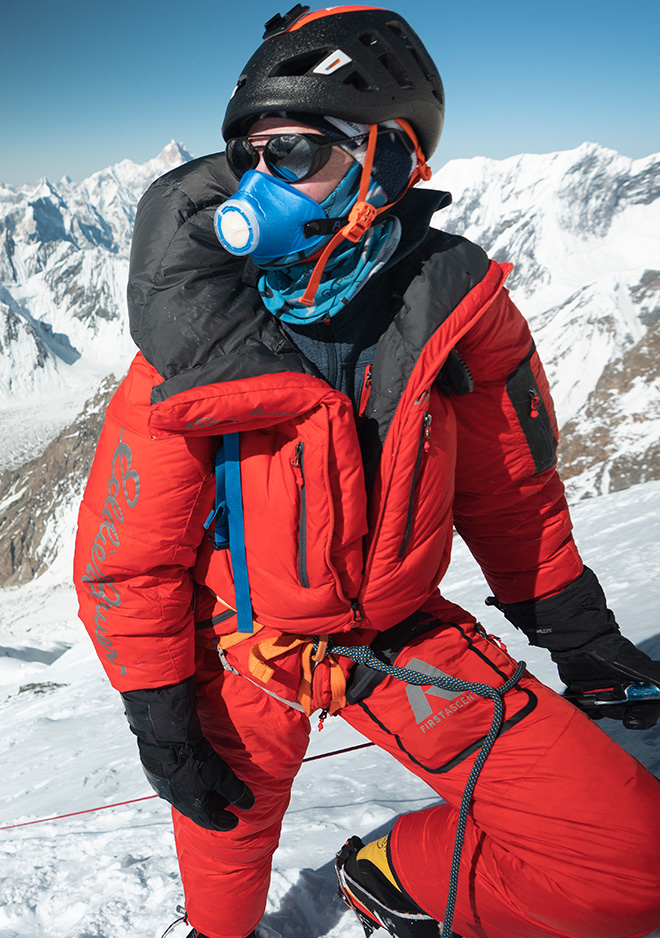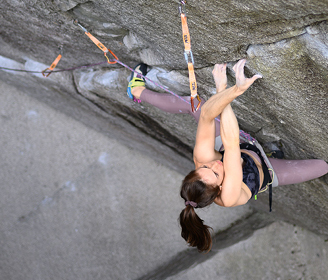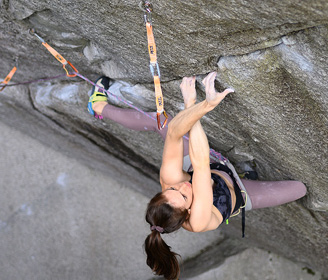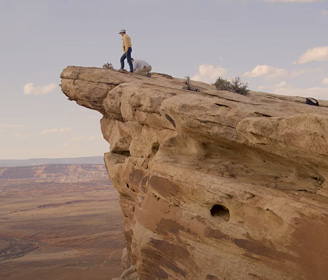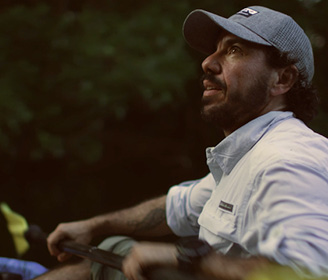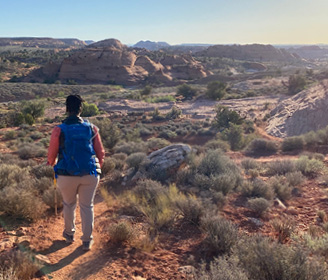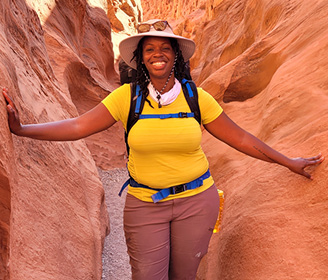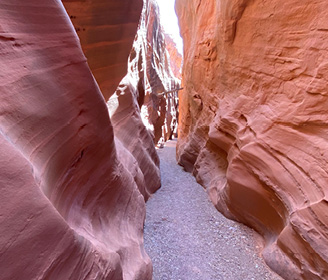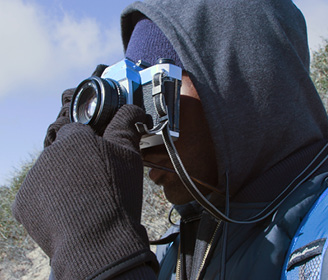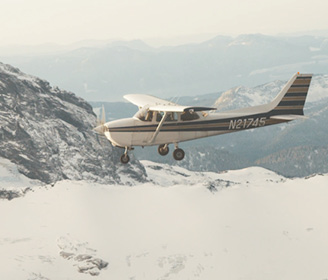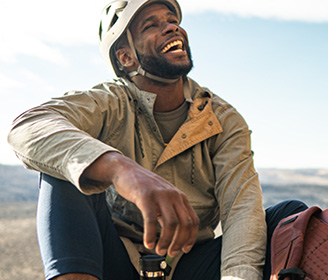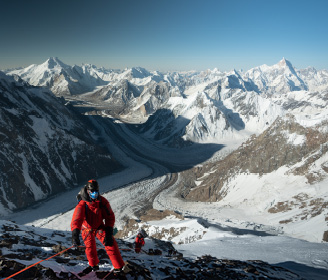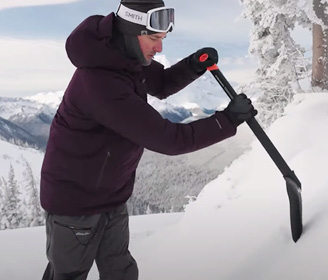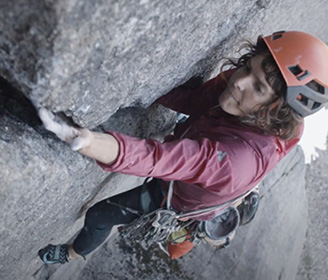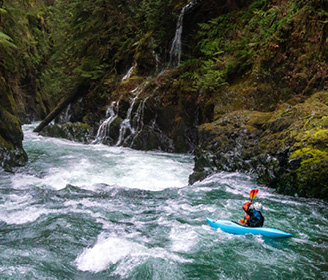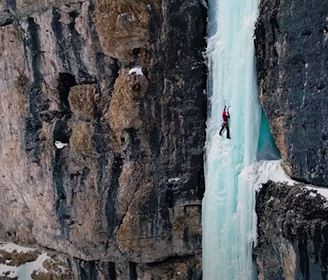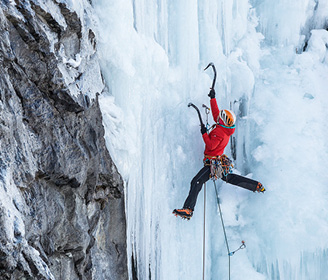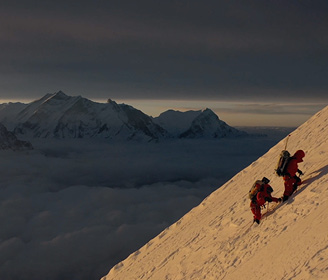Ever wondered, what is backcountry skiing? Or what you would need to go backcountry skiing? Drew Tabke, Eddie Bauer Ski Athlete and Two-Time Freeride World Champ is here to answer the internet’s most frequently asked questions about backcountry skiing, how to navigate the backcountry, the importance of avalanche training and much more.
Watch the video above!
Meet The team

DREW TABKE
Eddie Bauer Ski Guide
A two-time world champ in the freeride discipline, Drew Tabke launched from Utah shop guy to freeride contender in his first national contest at Snowbird in 2004. In the decade-plus since, “The Flyin’ Hawaiian” has circled the globe on tour to the burliest big mountain venues, from Chile, Argentina, British Columbia, and Alaska to Italy, Switzerland, Austria, and France.
What is backcountry skiing?
So, backcountry skiing is anytime you’re away from the controlled bounds of a ski area. You can go up a lift, or you can go up by hiking, or you can go up by a helicopter, or a snowcat. It’s being out in the uncontrolled snowy high places of the mountains where you can ski powder, ski spring snow, find every kind of conditions imaginable but you’re under your own care and your own responsibility for decision making and traveling around and keeping yourself safe.
Number two, how to learn backcountry skiing.
The best way to learn is to just start with classes. There’s lots of local providers around the world so, start with inter level classes. And really, the best thing is either to go out with an expert, a friend who you really know and trust their experience, or to hire a guide from a local agency. You can go out with a guide until you’re super proficient and know you can make decisions on your own.
What do you need to backcountry ski?
That’s a great question. The list for this stuff can get huge or you can keep it pretty simple. Besides your regular ski gear, no matter how you decide to go up or down, the big three for backcountry skiing are shovel, beacon, and probe. That’s your rescue gear. The beacon is an avalanche beacon in case you are buried in an avalanche or need to search for someone who was buried in an avalanche. The shovel and probe are requisites for that self-rescue process as well. I also carry a personal locator beacon with a GPS signal in case I’m out of cell range. So there’s a lot of safety and as well as technical stuff you wanna be sure to have when you’re planning your backcountry ski outing.
Next question, is backcountry skiing dangerous?
Backcountry skiing is dangerous. The whole point of backcountry skiing when you’re an expert or a guide is managing risks. So, we know we’re going into an uncontrolled natural environment, like I mentioned before, and we know there’s risks out there, so it’s a question of how much risk is out there and what kind of risk the group you’re with and yourself is willing to take. The trick to being a good backcountry skier is risk management protocols. That sounds like kind of a dorky thing, but you’re actually applying it to something really fun, which is skiing. So take those classes, find a guide, and keep it safe and fun.
Next question, why do people backcountry ski?
I backcountry ski personally because I like unobstructed experiences with nature. And I think a lot of people gravitate towards it because it’s the skiing experience that we love, but really with nothing obstructing you and the totally natural winter environment. No prepared runs, no ski patrol, no closures. And that feeling of freedom is tough to match.
Next question, how do people get to the top while backcountry skiing?
So that’s sort of the essence of backcountry skiing. Like I said, you can take a lift and leave the boundaries and get into the back country, but really, when we’re talking about backcountry skiing, that’s hiking up to ski down. Starting at your car, putting the skins on, your skis, or your split board, or throwing snowshoes on, hiking out to the top of a mountain and skiing back down. Climbing skins in combination with like a climbing binding on your skis or snowboards make it so that you can ski uphill. Those came from seal skins going back, you know, hundreds or even thousands of years when people would attach animal hides to the bottom of some planks. So they’re directional. They glide in one direction, and the little hairs grip in the other direction. So now there is still organically sourced skins like mohair. Most everything is synthetic. They’re cut to the shape of your skis and they have like an adhesive glue-like backing on them so when you’re ready to go up, you just stick ’em to your ski base in the specific direction they’re made to go uphill, set your binding to its uphill mode so your heel can lift, and then you just glide uphill like a pair of old school cross-country skis, but on your regular skis. Some people don’t like the up. They hate the up, and they’re in it just for the down. Personally, I enjoy my entire day while I’m out there. There’s definitely tough moments on the way up when you’re sweating and feet are sinking into the snow, and it’s just, you don’t know why you’re out there, but there’s nothing like pushing through those moments of low energy and of lack of motivation, getting up to a ridge with your friends and getting that reward. So, sure there’s some tough moments, but man, it’s always worth it, and I actually like the up quite a bit as well.
How long should ski poles be in the backcountry?
So, great question. Another gear question. A lot of people will use like a special ski pole when they go ski touring, an adjustable pole that you can go really short or it can telescope out to a longer length. Those can be really handy. Some of those poles even have like a climbing aid, like a Whippet or an ice axe head so you can secure yourself if it’s steep and icy. Personally, I just use my standard ski pole that I use skiing at a ski area when I go ski touring. I think less moving parts are better so I don’t have the extending poles when I normally go out. I just like to keep it simple. But generally, the rule of thumb is when you have your ski pole at your side and you’re standing upright, you want about a right angle with your arm and then any longer than that is starts to be helpful for long distance low angle stuff, like Nordic skiing. And any shorter than that starts to be helpful when you’re on really steep terrain and you don’t want long poles pushing up on your arms and making it uncomfortable for turning. So if you do have those adjustable poles, I like to go short if I’m climbing up something steep or long. If I’m crossing like a three mile wide lake and I’m basically cross-country skiing. Or for myself, I just keep it simple, regular ski poles. They do the job.
What is a good backcountry ski probe setup?
The most important thing in choosing a probe, I don’t get too hung up in the different brands that are out there. These need to be durable, so you wanna avoid the cheap ones. They need to be at least like 250 centimeters, preferably more like close to three meters long. Some of the intro ones will only be two meters long. So what you’re using these for is searching for somebody who may be buried under the snow. And the familiarity thing is huge. I’ve taught a few avalanche classes and taken a few avalanche classes where you’ll realize the alumni, or the people you’re going skiing with, haven’t practiced with their stuff yet. And an avalanche probe is something that if you didn’t stow it properly or haven’t taken it out recently or don’t know how it works, some of the cable mechanisms that lock this probe into place after you fold it out can get tangled, it can cause, you know, cause you to lose minutes in your response time. So, another great part about practicing is it keeps you up to speed with your equipment and makes sure your equipment’s in good shape, as well as making sure your partners know how to deploy it when it’s time to go. So make sure you’re familiar with your stuff as well as your partners ’cause it’s a real team sport when you’re out there backcountry skiing.
Is there a good way to find a backcountry ski partner when visiting somewhere?
For me, it’s really important to have a really trustworthy relationship with somebody, so either that’s a word of mouth recommendation from a friend or that’s a reputable guide service. So I don’t wanna dissuade people from meeting people and going out with people they’ve met online, but it’s really important to know the capabilities and knowledge of the people you’re skiing with before you go out, so just exercise some caution if it’s a new friend and start conservatively. If you want to go further out into the mountains somewhere new, it’s definitely a time to look for a guide. Cool, next question.
What gym exercises are good training for backcountry skiing?
Listen, I’m not gonna lie, I do not spend too much time in the gym preparing for backcountry skiing. It’s a tough sport to cross-train for because you have a very specific stride as you’re skinning. And you also have weight attached to your feet, so you could, you know, go on a jog, add weight, add ankle weights to your jog. Target it more towards aerobic fitness rather than explosive, like, powerful fitness. And that’s kinda the thing you’d find when you’re transitioning from, say, resort skiing to backcountry skiing is resort skiing does require, you know, strong glutes, strong quads. You want to have pretty powerful legs to support lap after lap from the trail lift. With backcountry skiing, since you’re carrying your weight up the hill, meaning the equipment and your butt, these aerobic focus kinds of fitness are way more important than the explosive power ’cause yeah, you still need to ski down, but it’s about being to feel light on your feet and move through the mountains all day. So, target that however you feel like you can. Ooh, next question.
How to stay hydrated backcountry skiing?
Personally, I’ll drink one to two liters of water during an average day out in the mountains. Sometimes I’ll bring a hydration bladder and a Camelback so I can sip constantly. Sometimes I’ll bring a one liter thermos of hot tea if it’s a cold winter day. Know your body, stay hydrated. Definitely don’t end the day with a full water bottle ’cause that’s weight you carry that you didn’t need. And, yeah, drink water. Cool, and next question, something I’m really passionate about.
How to learn avalanche safety and education for backcountry skiing?
Typically, you might start with something as easy as just like a couple hour awareness chat up to a level one where you start to learn more about actually recreating and going out into the mountains and reading forecasts, up to being a pro observer where you’ve got years of experience and you can go out in the mountains, navigate safely, and submit what you see to your local avalanche agency. Snow is a really beautiful natural element that we haven’t figured out completely so it just feels like there’s always something new to learn and the science keeps growing, so every couple years when you take a new course, there’s new research, there’s new technology, and it’s just something fun to be involved with ’cause it’s not perfect and it’s a mystery, but a really cool community surrounds it and it’s awesome. I really recommend taking a course to everybody.
How to pack for backcountry skiing?
There’s definitely some tricks to it, and you just, you don’t wanna over pack, but you need to make sure you can respond to an emergency. So, lot of times people will have very big packs when you go out with them. And it’s a good thing if you’re with a new partner, or people you’re not totally familiar with, to go through your pack at the trailhead. It’s a good time to check that all your safety gear is present and functioning, then also go over any group gear that maybe you have duplicates of. It’s really important to have a first aid kit when you’re in the back country, but you probably don’t need three so if you’re out with a group of people, make sure you have, you know, one first aid kit, maybe one makeshift rescue sled, which is a cool rescue product that’s out there, maybe some rope or a space blanket. Distribute them through the group and try to cut back on weight in general, while making sure you got all your bases covered for the essentials. So me, personally, I have a small first aid kit, small repair kit, I’ll bring an extra layer for emergencies like a small down jacket, my food and water, the other rescue gear I mentioned. But really, since you’re more active when you’re backcountry skiing than when you’re skiing inbounds, you can typically dress a little bit lighter than you’re used to in the winter ’cause it’s an aerobic sport. So there’s a trick to learning how you can be lightweight and efficient, as well as covering all those safety bases. I don’t wanna make backcountry skiing seem like inaccessible because, really, with whatever gear you already have, as long as you have the appropriate safety gear and expert to take you out there, you don’t need to get all new stuff. Whatever you are comfortable with in the winter is gonna work. Personally, now that I backcountry ski a lot during the year, I have a separate kit of stuff for backcountry skiing versus any other kind of skiing. That’s like softshell pants and softshell upper layers, a little bit lighter weight everything in general because it’s an aerobic sport. I’m kinda moving all day, so I know that I don’t have to dress as warm or as heavy as if I’m riding a chairlift in a blizzard, for example. But, make sure to always keep those emergency layers, space blanket, stuff like that stuffed in the bottom of your pack should things go sideways and you gotta build a snow cave and spend the night out in the woods. All right, next question.
What’s the difference between backcountry skiing and touring?
Definitely a lot of different words out there, especially depending on, say, what country you’re in, or what era you got into this sport. So backcountry skiing, touring, randonee skiing, skimo, sidecountry, slidecountry. You know, there’s a lot of sort of buzzwords that get thrown around. Really, backcountry skiing and ski touring are the same thing. Touring is gonna imply that you have to hike uphill, you know. You attach those climbing skins to your skis, you hike uphill, you ski down. Backcountry skiing, you could do it that way, or you could get into the backcountry via your local ski area’s chairlifts and then out through the backcountry gate by leaving the boundaries. But they’re the same thing. And they’re awesome. Cool, next question.
How to behave backcountry skiing?
Let me think how I would like my partners to behave while backcountry skiing. The first thing that comes to mind is safety, so knowing when is the time to space out because you’re in a place of elevated hazard, and when is a good time to group back up. That maybe means if you see somebody in the bottom of a valley, you don’t wanna ski down right above them. Some people really like the solitude of the back country, some people like to play music on a boombox. I fall somewhere in between, so I definitely will bring a Bluetooth speaker out into the backcountry once in a while for some jams, but also if there’s other groups around, I like to try to be a little more respectful and a little more quiet. Some people love their dogs in the backcountry, some people don’t. Just be aware of the group you’re with and the other groups around you that you might be affecting. Like I said, the backcountry is so great because it’s a place of a lot of freedom and there’s not a lot of rules and not a lot of people to tell you what to do. So enjoy yourself, but just be aware when you’re in crowded areas that what you’re doing could put other groups at risk or could affect other groups’ experience. Next question, one of my favorite topics.
What are good snacks for backcountry skiing?
I’m not necessarily a nutrition expert. I just go skiing and grab what I can find. I do know that the more protein I bring, the better I feel through the day rather than just eating sugar and sweet snacks all the time. Stuff that’s dense and calorie dense, so that it packs well and is durable and you get a lot of calories per weight. So yeah, just think stuff that’s dense, durable, heavy, and then try to lean towards those proteins and away from the sugary snacks as much as possible, even though a bag of Skittles does taste delicious when you’re in the backcountry.
Is backcountry skiing expensive?
I personally would like to believe that backcountry skiing is a way to make skiing more accessible to everybody. You don’t need, you know, $200 a day lift tickets to go backcountry skiing. There’s no day price for backcountry skiing. There is maybe an initial investment for people to get the new gear, to get the safety equipment, to get the appropriate layers. So there’s definitely an investment, as well as the cost it might take to take a couple of courses, but if you’re really into it and it’s something you think you’d have a passion for, it’s totally worth getting past those initial investments because once you have some expertise and some gear, that amount you paid to get into the sport is gonna take you pretty far compared to those day tickets. So, there’s some initial investment with backcountry skiing, but I think one of the things that makes it such a cool sport is that once you have the basics for gear and for knowledge, it’s actually basically free.
How good do you need to be before you start backcountry skiing?
So that’s an awesome question and one I think more people should ask themselves before they start. You can be a total novice skier and take an avalanche class, take a backcountry skiing class, get the stuff, and go find an easy to ski destination, and you’ll be fine. Totally suggest people learn to ski first, but if that’s not what you’re into, I’m not gonna force anybody to buy lift tickets. Get into the backcountry and learn to ski out there, just know that those variable conditions you’re gonna find make having somebody that can help you pick conditions and pick good terrain to learn on pretty important. Even more important than for experienced skiers. Okay, the next question is about what you wear when you’re out there.
How to layer for backcountry skiing.
I live in the northwest so it’s a little bit milder than, say, like Colorado or Montana, or a continental mountain range. Starting at the bottom, I’ll have very thin socks. A lot of people wear thick socks. I go with the thinnest socks possible. That’s so they fit in my boots, as well as the fact you’ll be sweating all day so thick socks generally just make for more blisters, friction, and soggy feet. Thin socks, maybe with a change of socks in the pack. For my legs, I’ll just go with a softshell ski touring pant, without even having long johns unless it’s a colder day. Those pants are great. You might feel cold first thing in the morning at the trailhead, but once you’re moving and once the sun comes up, that’s about the weight that I like to use. And then if it’s wet or very cold then I might add, you know, a base layer, a Merino base layer or a shell pant. But ideally, softshell pants for touring. Up to the top, I’ll have a thin Merino base layer, a thin synthetic or down mid-layer, and then normally a softshell, like a Sandstone Shield, which is one of the Eddie Bauer softshells I really like. If it’s wet, then I’ll switch that to a full hardshell, but basically it’s a Merino base layer, synthetic or down mid-layer, and then a shell. Whatever’s next to your skin needs to wick moisture when you’re sweating and then you wanna be able to protect yourself from the elements, whether that’s through softshell, hardshell, or whatever your outer layer is. And then warmth, less than you might expect you need because of all the aerobic exercise, but always keep that down jacket stuffed in the bottom of the pack in case you get chilly, in case somebody else in your group is cold. Cool, next question.
What is the most important thing when backcountry skiing?
The most important thing. That is a tough one. Keep it simple. The most important thing when backcountry skiing is getting back to the trailhead at the end of your day safe with your entire group safe as well. Safety is first. Backcountry skiing, like I’ve said a few times, you’re in an uncontrolled environment. Your rescue, should anything go wrong, is up to you and your group. Better to avoid any mishaps. Keep it safe. Get down safe. ‘Cause when you’re backcountry skiing, you’re a team. So just because you might have more experience than the new guy, if you get into trouble, that new guy’s the one that’s gonna have to help you. But it’s just a good strategy to keep everybody safe and feeling respected, and just adds a better flow to your day. Cool, next question back on gear.
How to use an airbag backcountry skiing?
So like skins, ski touring bindings, boots, all this stuff, airbags have become a huge part of this sport in the last five to 10 years. An airbag is a backpack with a compressed air cylinder or a high powered battery-operated fan, with a handle where if you’re caught in an avalanche, you pull this handle, and a big airbag will inflate out of your backpack. The effect is like the Brazil nut effect, which is in this tumbling flow of an avalanche, bigger particles of lower density float to the surface. So once that airbag is pulled, in almost every case, the person wearing it will float to the surface of the avalanche and end up on top or near the surface instead of buried in the bottom. So how to use an airbag backcountry skiing? I mean, it’s great, you know. You pretty much have to use a backpack when you’re backcountry skiing. The one most important thing to mention with airbags and backcountry skiing is to get the education first, to know about rescue first, and then add that airbag on as sort of your contingency plan. You don’t want having an airbag being a driving factor to make any decisions or as a replacement for any of the other, you know, shovel, beacon, probe, and education steps that we need to take. So get all the other basics dialed in 100%, and then look at those airbags as like your last resort. You never wanna have to pull that handle, shouldn’t have that as part of your plan, but it’s great technology that you should definitely check out.
What are the best places to go backcountry skiing?
It’s what everybody wants to know, right? We get into backcountry skiing ’cause we like this experience of being free out in the mountains and we also wanna ski really great snow. There’s no way around it. We wanna come back safe, like I said, that’s our number one goal, but we also wanna find the best possible snow and get the best skiing out in these beautiful mountains that we go skiing in. So, the best places to go skiing? It’s gonna depend on your region and then the better you are at skiing and backcountry skiing, the better you’re gonna be at picking where exactly on the map, at what elevation, at what aspect, at what time of the day you’re gonna find the best snow. So, personally, I live in Washington. I love skiing at Crystal Mountain. That’s probably my preferred place to ski in this area. It’s just at a great elevation, has a bunch of really nice terrain and snowfall for this Washington region we’re in. If I’m in Europe, I just, I love skiing on the Italian side of Mont Blonc, through the tunnel from Chamonix. You know, in Europe, a lotta times, that’s gonna be taking up a tram to then leave the boundary and then go ski touring and maybe ski to another village. The options are limited. This is an impossible question to answer because the best places to go backcountry skiing are wherever you are in the world and if you’ve got the gear and the knowledge, you can go wherever you want. So it’s an infinite question. Call your local guide office, find an expert, and get out there and explore. Love this stuff. I just, I love this sport so much. There’s just so much to learn, and even though I’ve been doing it since, say, 2,000, and even before that with my parents, I just get more and more motivated to learn about it as the knowledge and the equipment gets better. So, get the knowledge, get the training. Remember, it’s all about coming home safe so you can go out another day. The freedom and the experiences out there on some skis and climbing skins in the backcountry is like nothing else you can do. That concludes it.

